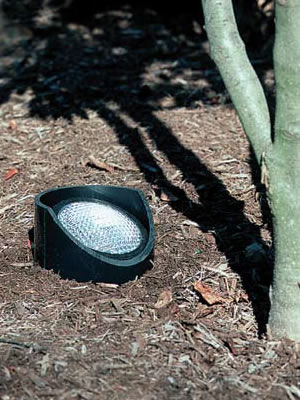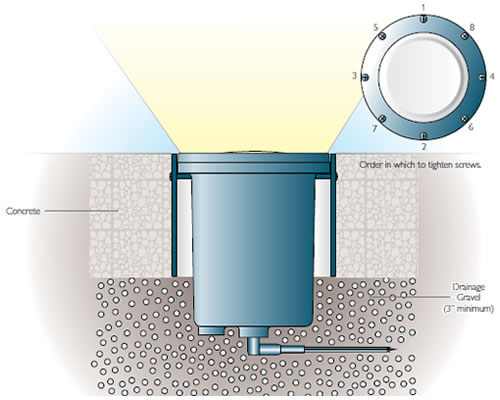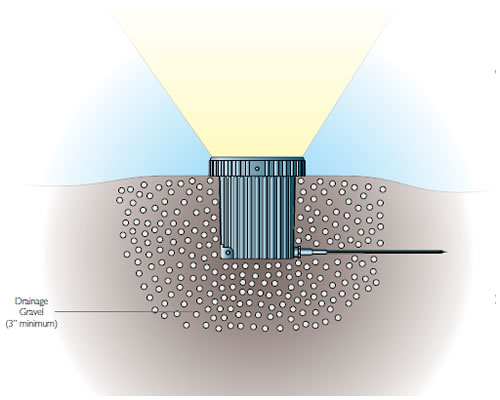

Installation of inground fixtures requires special consideration. Proper grading, drainage material and tightly securing the lens and gasket are procedures that are key to a successful inground Installation. The following are basic steps in installing inground fixtures in either concrete (using Hadco concrete pour accessory) or soil. For greater detailed instructions, refer to the Installation: sheet enclosed with each Hadco fixture.
NOTE: To ensure proper drainage, prepare gravel foundation. Make certain that the concrete level, when poured, will be flush with the top of the concrete pour accessory. To help decrease condensation, energize fixture for 20 minutes prior to installing and tightening main lens and retainer ring.

NOTE: Do not place fixture in a below grade location as the fixture will collect dirt and debris and possibly become submerged in extremely wet conditions. Do not place plantings too close to the fixture as the foliage may grow over the light, blocking the light. Do not allow mulch to touch inground fixture in any way as this may cause the fixture to overheat and fail.


design42 New Media Web Design
1804 Meadowbrook Terrace
Hendersonville NC 28791